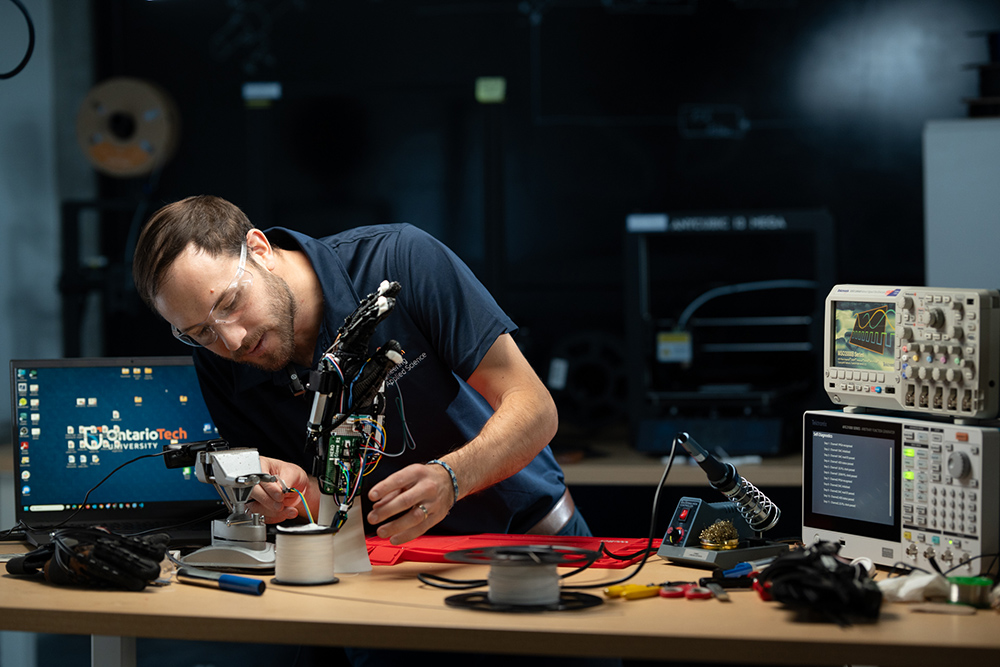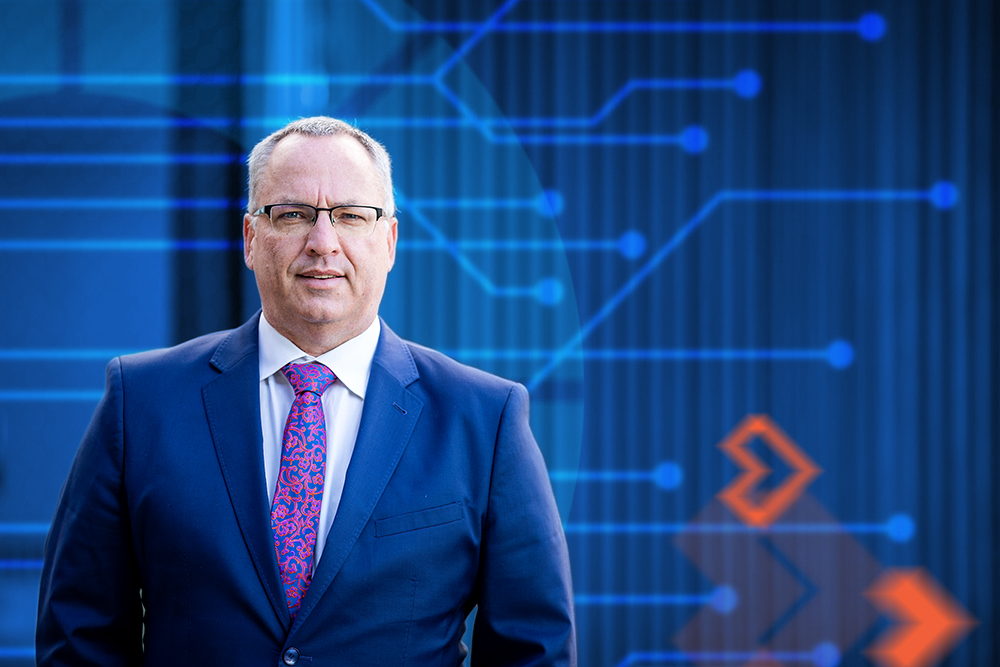
When the Internet arrived, it was mostly used on computers and later phones. Now, everyday objects, such as fridges, thermostats, watches, and cars, can also connect online. These smart devices can ‘talk’ to each other to make life easier, safer and more efficient. Imagine a thermostat that adjusts to your schedule, or a smartwatch that shares your health data with your phone or doctor.
Dr. Khalid Elgazzar, Canada Research Chair in the Internet of Things (IoT) at Ontario Tech University, explores how sensor-equipped objects and wireless technology are shaping smart services in health care, transportation, industrial automation and public safety. He shares insights on how his lab’s work with smart, connected technology is advancing solutions to pressing challenges:
Q: What are some of the key applications your IoT Research Lab is working on?
There are exciting developments in smart technologies (also known as ‘cognitive IoT’), which focus on turning sensor data into practical actions. These technologies can help make our communities safer and improve monitoring systems across many areas, including:
- Road-user behaviour for speed enforcement: AI-powered radar and camera systems can monitor high-risk zones for speeding to ensure data-driven, ethical enforcement.
- Traffic modelling and smart intersections: Smart cameras equipped with special software can analyze traffic patterns in real-time, adjusting traffic lights, enabling vehicles to communicate with nearby road monitoring devices, and prioritizing emergency vehicles. This helps reduce congestion, makes driving safer, and prevents collisions.
- Heart monitoring: Wearable patches track cardiac activity in real time, using AI to detect arrhythmias and alert clinicians, which can also generally improve remote cardiac care and save lives.
- Dementia care and pre-agitation detection: Wearable devices and surrounding sensors can detect early signs of agitation through behavior changes or body signals analysis. This allows caregivers to quickly respond with calming techniques, while still respecting the patient’s privacy and dignity.
- Precision agriculture: Smart sensors monitor soil health, crop conditions and local weather. This helps farmers use AI to water crops more efficiently and detect diseases early with drones, leading to better harvests and more sustainable farming.
Q: How does your research uphold Ontario Tech University’s commitment to tech with a conscience?
‘Tech with a conscience means measuring success not by patents and innovations, but by improved lives. We focus on smart solutions that are accessible, secure and truly beneficial to communities. Our goal is always to enhance efficiency, convenience, and better decision-making. In everything we do, we prioritize privacy from the start and use strong cybersecurity because truly safe communities need trusted technology that protects personal information.
Q: Still, aren’t there mounting concerns about privacy with all of these devices communicating with each other?
While smart technology brings many benefits, it also raises questions about privacy and data security. That’s why researchers and companies are focused on making these devices are safe and respectful of personal information.
Tech should serve people, not the other way around. Our systems have purpose-driven design, to process data anonymously, rather than store personal information. And, we validate algorithms for bias. Privacy isn’t optional: it’s mandatory.
IoT connects everyday objects to help people live better and work more efficiently.
Q: What are some notable long-term ways that smart technology might affect the well-being of our communities?
Smart technology can be used in bigger ways, such as in hospitals, factories and cities, to monitor equipment, improve safety, reduce waste, save money and create tech jobs for system maintenance and data analysis.
In smart transportation, predictive technology could reduce collisions by 20 to 40 per cent and improve emergency response times with smarter traffic signals. Fewer crashes would reduce health-care costs, potentially by hundreds of millions of dollars. From a sustainability standpoint, decreased traffic congestion could reduce vehicle emissions by 15 to 30 per cent, and extend the life of roads through better maintenance planning.
Q. How has your lab’s research contributed to enhanced vehicle and pedestrian safety standards in school zones?
Our evidence-based research, conducted in collaboration with Durham Region has directly contributed to enhancing vehicle and pedestrian safety standards.
We studied driver behaviour in school safety zones equipped with automated speed enforcement (ASE) cameras. The results showed a significant decrease in speed violations at all study sites.
- During warning periods prior to ASE activation, 36 per cent of vehicles were above the speed limit.
- During active ASE enforcement, violations dropped to below 14 per cent.
While violations rose slightly (by 12.5 per cent) after ASE deactivation, the overall reduction from the initial warning period to the post-ASE period across multiple rotations demonstrates the lasting positive impact of ASE on driver behaviour in school zones.
Q. How is your lab’s research uncovering new applications for wearable devices that will improve personal health and wellness?
Our research is finding new ways to use wearable devices to improve personal health and wellness through smart sensing. For example, in predicting agitation in people living with dementia, we combine visual data with physical health signals to detect agitation before it escalates. This allows timely, personalized care that can prevent harm to the person or others, improve quality of life for patients and their families and ease the burden on caregivers.
We are also working on remote ECG monitoring, which can provide early warnings for life-threatening events in people with chronic heart conditions. These advances are especially important for those living in remote or underserved areas, making health care more accessible and fairer, while offering proactive, life-saving support.
3 > 1
Media contact
Bryan Oliver
Communications and Marketing
Ontario Tech University
289.928.3653
bryan.oliver@ontariotechu.ca
Ready for tomorrow’s careers.
We prepare our students for the fast-paced, ever-evolving world of technology.












